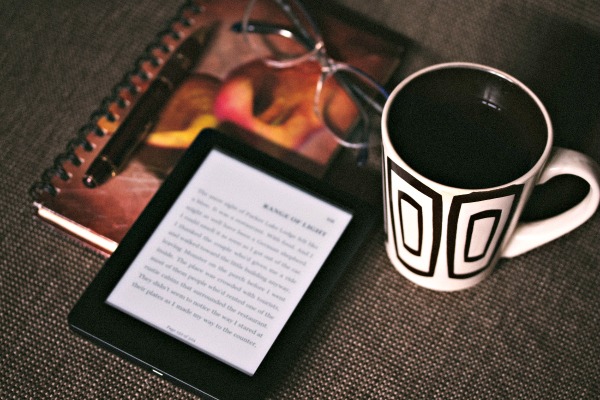A quick guide to pricing your e-book
Our guest blogger today is Fred Johnson, an editor for Standout Books, where he helps authors take their manuscripts from good to perfect. In his spare time, Fred writes bad poetry and worries about the future.
A quick guide to pricing your e-book
There’s one question that we editors hear again and again from self-publishing writers we work with: How much should I charge for my ebook?
It’s certainly a tricky question. The history of self-publishing is littered with tragic tales of over- and under-priced books falling at the wayside as stingy or skeptical crowds pass them by. It’s one of the most common mistakes self-publishing writers make.
Pricing your book isn’t a one-size-fits-all kind of deal. It depends on what you’ve written; how long your book is; how established you are as a writer; and any recognition, reviews, or awards you or your work have amassed. The quality of the cover, formatting, and design will also play an important role. Before you think about pricing your book, look over these tips.
Make sure your book looks appealing
This obvious step is worth reiterating at every opportunity: Before you put your book out there, make sure it looks like a professional product.
Nobody wants to pay for something that looks thrown together. Be certain you have a professionally designed cover, the content adheres to industry standards in terms of style and formatting, and the text is legible and pleasant to read.
Amazon is full of poor-quality e-books whose writers didn’t think appearance, typography, and proofreading were important. You can take advantage of this – if your book looks like the diamond in the rough, readers will flock to it before they’ve even read the description. While the “don’t judge a book by its cover” idiom is well-known, rarely is it obeyed.
The more appealing your book looks, the more you can charge for it without worrying about putting people off. If it looks high-quality on the outside, people will presume it’s high-quality on the inside.
Sweeten the deal
 People are less likely to take a chance on a new writer, so it’s a good idea to make yourself more appealing by offering a freebie. This could be a short story, a sample (this works well with nonfiction), or a brief novella. Its main purpose is to show the discerning reader how well you write and convince them that you’re worth investing in.
People are less likely to take a chance on a new writer, so it’s a good idea to make yourself more appealing by offering a freebie. This could be a short story, a sample (this works well with nonfiction), or a brief novella. Its main purpose is to show the discerning reader how well you write and convince them that you’re worth investing in.
Even better, by giving out a free sample or the first novel in a series for free, you can reel back in paying customers once you release the follow-up, charging incrementally more at each step.
You’ll also hopefully have made more of a name for yourself by the time you bring out these subsequent books. You’ll be able to rely upon a core readership, allowing you to move further away from the low end when pricing.
However, even with the freebie, you’re going to want to price your first book very competitively. Amazon, the largest and most popular marketplace for self-publishing writers, will pay 70 percent commission for books priced between 2.99 and 9.99 (this is in dollars, pounds, and euros), but only 35 percent for books over or under these amounts.
Novellas
Starting out with a novella is a risky choice. Novellas tend to sell less well than novels – readers are consumers, and they like to feel like they’re getting more for their money.
As such, you’re going to want to stay as close as you can to the lower end. For Amazon’s 70 percent commission, 2.99 will seem like the ideal choice. However, if you’re more concerned with establishing an early audience than you are with raking in money, you might want to go for 1.99 or even less. You have to remember that your readers are taking a chance with you and will need persuading.
Novels
If 1.99 is a good starting price for a novella, then 2.99 is a good place to begin for a novel. This places you nicely within Amazon’s 70 percent commission bracket. You’ll gain more for each book sold, and the low price should ensure as many people as possible buy your untried and untested book.
Short stories
If you’re selling short stories singularly, charge as little as possible. It’s a good idea to give these away since they provide a curious reader with a taste of your writing.
On the other hand, price short story collections similarly to novels, paying careful attention to how established you are as a writer (as a rule, it’s a bad idea to start out with a collection of short stories – save it for when you’re more established.)
Nonfiction
Nonfiction is a whole different kettle of fish. Generally, people will be looking for nonfiction to satisfy some niche curiosity or need. If your book is a guide to gardening, it becomes pragmatic, and people looking for gardening tips will see it as a necessity.
Unlike commercial fiction, nonfiction isn’t read once, consumed, and forgotten. Rather, it is kept on the shelf in case it’s needed again. Bearing this practical utility in mind, you can charge more for nonfiction because people are happier paying for something they think they need rather than want.
Of course, this scales in terms of importance – if you’ve written a guide to flower-arranging, you can’t charge the same as you would for a book explaining how to do your own wiring, since the latter could potentially save a reader buckets of money spent hiring tradesmen.
A good rule of thumb to remember if you’re hosting your book on Amazon is to not cross the 9.99 mark – as soon as you do, there goes that 70 percent commission. You’d have to go above 20 dollars/pounds/euros to earn any more in commission, and that would cut your sales.
But I’m not new!
If you’re new to self-publishing but have published stories/novels in journals, magazines, or through a traditional publisher, you’ll be on a different level to someone just starting out.
Your book’s promotional copy should mention these previous published works. Quote from any positive reviews your work has received and mention awards you’ve won. You’re looking to transfer any previous audience you may have had across to your new book.
Presuming your book looks professional, these accolades and features can justify charging more for your book.
I’d recommend sticking to about five dollars/pounds/euros. This is low enough that your book will look like a good deal and high enough to make use of that author recognition you’re rolling in.
Pricing is a progression. You might have to earn a penny now to earn a pound later on.
What have you learned about e-book pricing? Please share it in a comment below.
Like what you’re reading? Get it delivered to your inbox every week by subscribing to the free Build Book Buzz newsletter. You’ll also get my free “Top 5 Free Book Promotion Resources” cheat sheet immediately!



Good practical advice, Fred. Thanks so much for sharing.
Hi Dirk, you’re very welcome. I’m glad you found the post helpful!
Thanks, Fred. Excellent information.
I developed a rough pricing guide based on word count (for fiction) a couple of years ago.
10K–$1.99
20K–$2.49
30K–$2.99
40K–$3.49
50K–$3.99
60K–$4.49
70K–$4.99
80K–$5.49
90K–$5.99
100K–$6.49
… and so on.
It works well as a starting point.
This is soooo helpful, Kathy. Thanks!
Sandy
Hi Kathy, that’s an interesting template, thanks so much for sharing!
My pleasure, Sandra and Fred. Number of words shouldn’t be an author’s only criteria, but it provides a foundation.